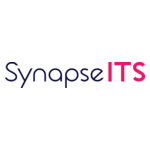Slingshot will develop the user interface of the new space traffic coordination system to improve spaceflight safety for satellite operators worldwide
Slingshot Aerospace Awarded NOAA Contract to Develop Presentation Layer for the Traffic Coordination System for Space (TraCSS)
Nick Wodzinski
nwodzinski@aboutsage.com
Slingshot Aerospace, Inc., the leader in AI-powered solutions for satellite tracking, space traffic coordination, and space modeling and simulation, today announced it has been awarded a $13.3 million contract by the National Oceanic and Atmospheric Administration’s Office of Space Commerce (OSC) to build the TraCSS user interface. This contract includes a 12-month development period ($5.3M) with four option years.
Slingshot will develop the TraCSS Presentation Layer, which is the website and user experience for the United States' new space safety platform. Designed for global use, TraCSS will serve civil, commercial, academic, and national security satellite operators worldwide. Slingshot will leverage its space traffic coordination software, Slingshot Beacon, to support the development of the TraCSS Presentation Layer.
With 86 countries operating over 10,000 active satellites in orbit today and up to 100,000 active satellites expected to be in orbit by 2030, the risk of collisions is growing exponentially. Slingshot data shows that satellite operators experienced a 17% year-over-year rise in conjunctions—close approaches between satellites—in the past year alone. These trends highlight the urgent need for an advanced space traffic coordination system to improve safety and ensure the sustainable use of space.
OSC was directed to take over traffic coordination responsibilities from the Department of Defense following the issuance of Space Policy Directive 3 (SPD-3) in 2018. TraCSS.gov is expected to be online and ready to support the transition of all commercial users from space-track.org in late 2025.
“Slingshot’s role in developing this groundbreaking space traffic coordination platform requires intentionality as well as close mission alignment with OSC,” said Tim Solms, CEO of Slingshot Aerospace. “NOAA’s TraCSS initiative offers the opportunity for enhanced space safety and sustainability, fostering growth across the commercial, civil, and academic space sectors for the foreseeable future.”
TraCSS is a modern, cloud-based IT system that will provide essential space situational awareness and space traffic coordination services to the more than 10,000 active satellites in orbit today. The Presentation Layer will be the primary interface for surfacing conjunction data messages—warnings of upcoming conjunctions—which sometimes require satellite operators to coordinate and proactively maneuver their satellites to avoid a potential collision.
“Deploying the TraCSS user interface is the next major step in operationalizing U.S. civil space traffic coordination, first codified in Space Policy Directive 3,” said Audrey Schaffer, Vice President of Strategy and Policy at Slingshot Aerospace. “Slingshot is proud to partner with the Office of Space Commerce in delivering spaceflight safety services to the world.”
Slingshot will develop the Presentation Layer user interface on top of NOAA’s existing TraCSS infrastructure with the support of COMSPOC and T and T Consulting Services. Slingshot was also selected by the Office of Space Commerce earlier this year to provide space situational awareness and satellite tracking data as part of a limited-term pathfinder project focused on low Earth orbit satellite tracking.
About Slingshot Aerospace
Slingshot Aerospace provides government and commercial partners around the world with AI-powered solutions for satellite tracking, space traffic coordination, and space modeling and simulation. The Slingshot Platform transforms disparate space data into a common operating picture of the space domain by leveraging advanced space object tracking, artificial intelligence, astrodynamics, and data fusion. Slingshot’s platform combines data from the Slingshot Global Sensor Network, the Slingshot Seradata satellite and launch database, satellite owner-operators, and other third-party space data providers to create a holistic and dynamic view of space for training, planning, and operations. This unified representation of space activities – past, present, and predicted – enhances operators' space situational awareness, improves operational efficiency, and reduces risk for space operators. Slingshot is driven by its mission to make space safe, sustainable, and secure. The company was launched in 2017 and has locations in California, Colorado, and the UK.
Visit https://www.slingshot.space/ and follow Slingshot Aerospace on Twitter and LinkedIn.
The Slingshot Aerospace media kit, including photos, can be found HERE.
View source version on businesswire.com: https://www.businesswire.com/news/home/20241126018913/en/

 Business wire
Business wire 












Add Comment